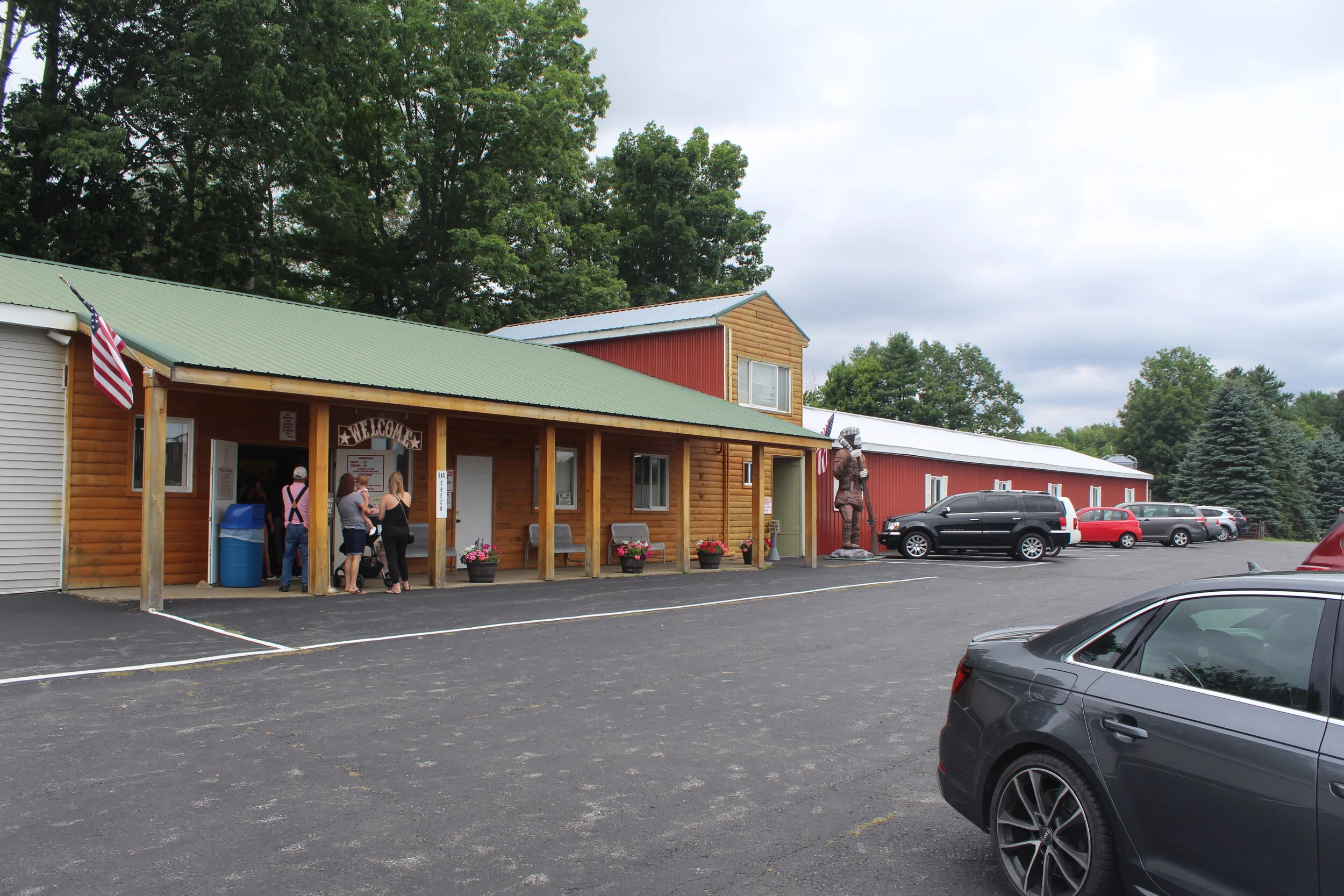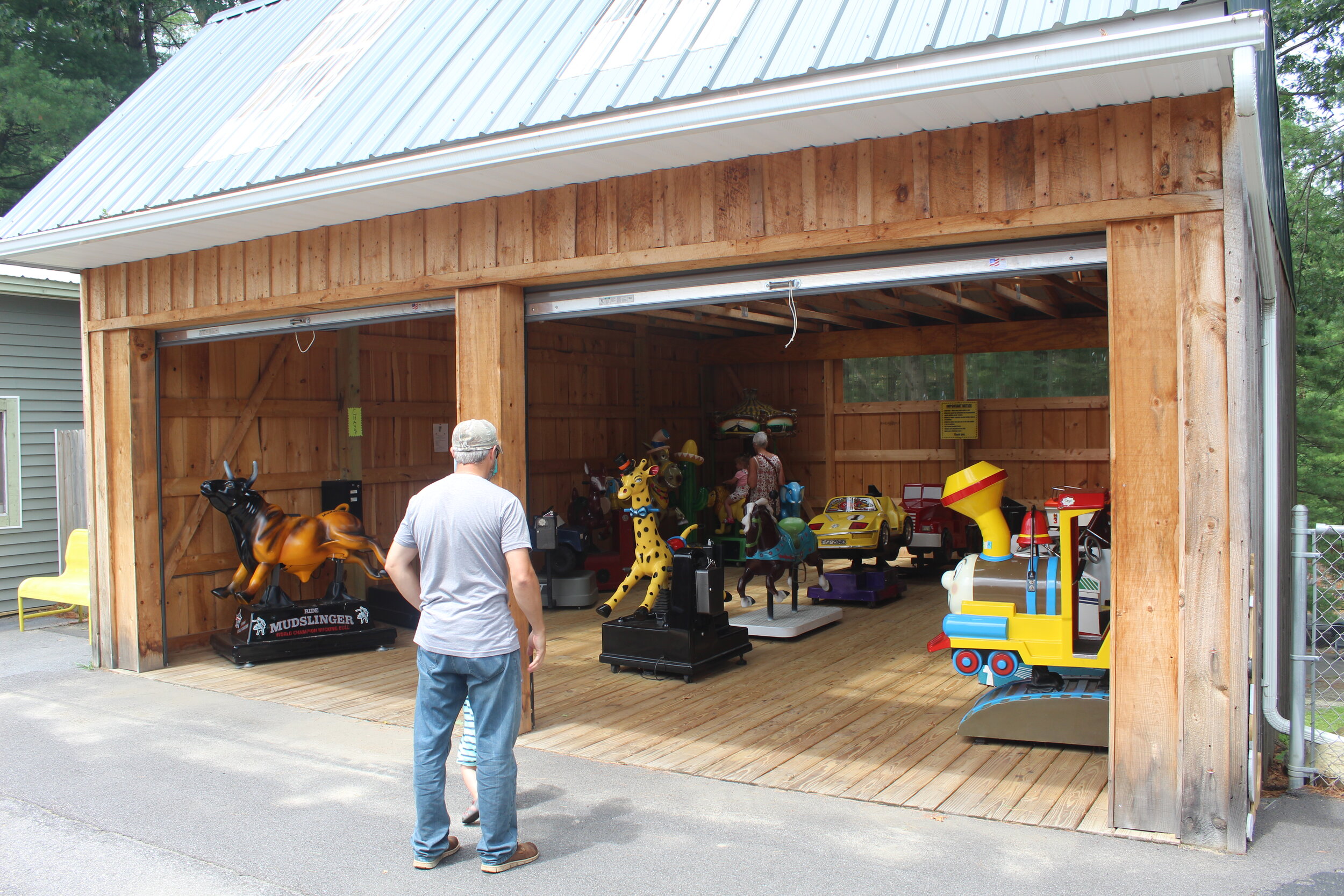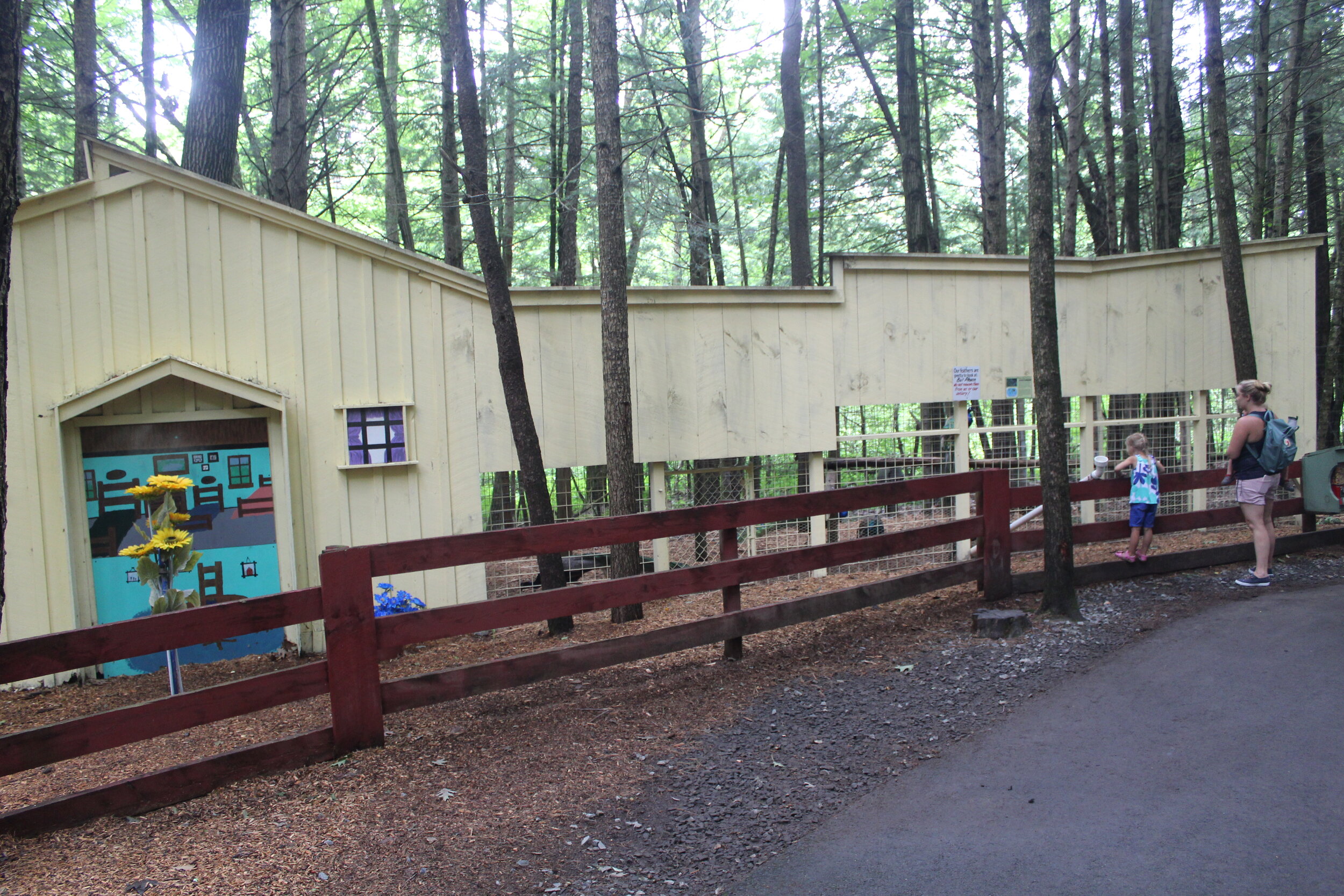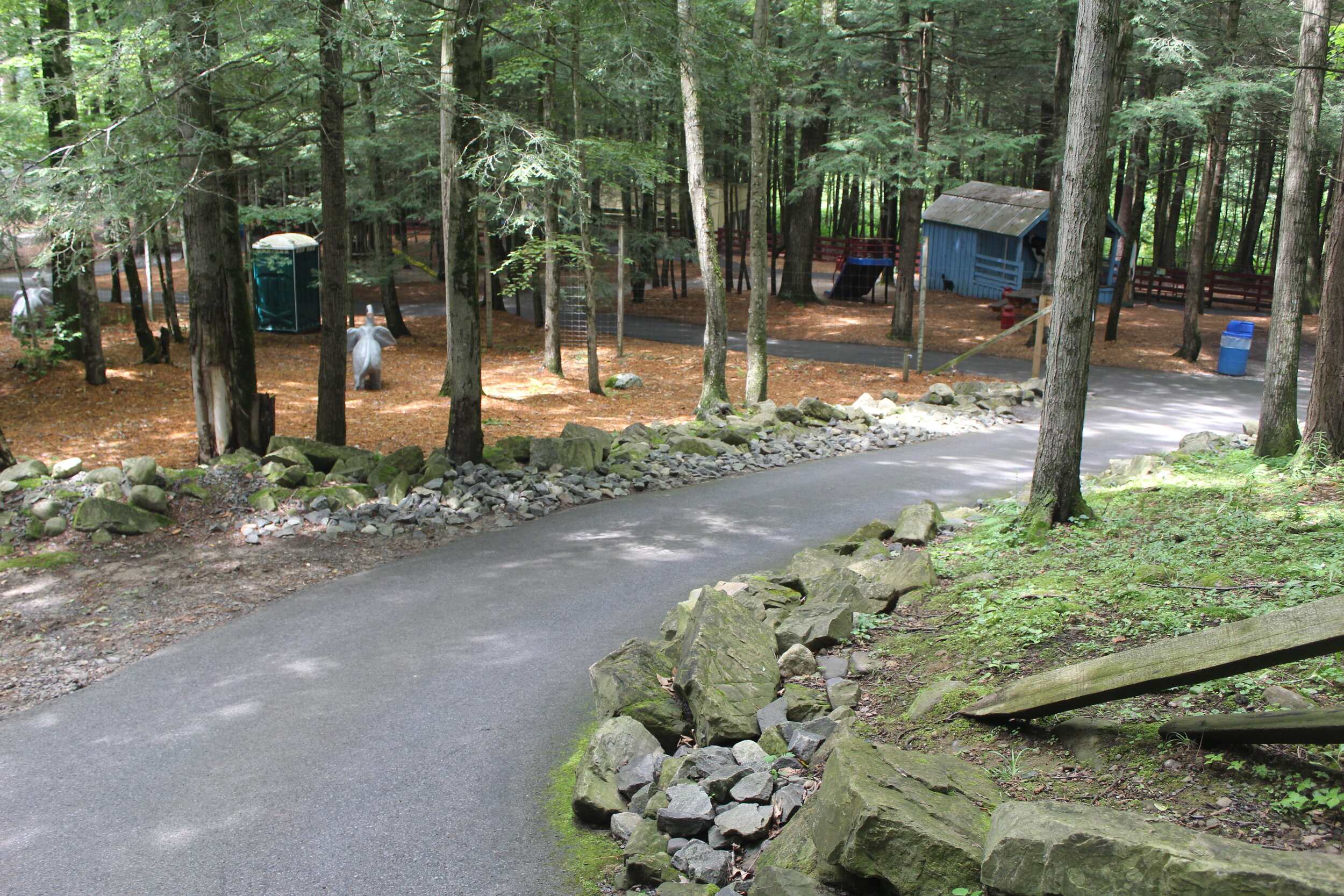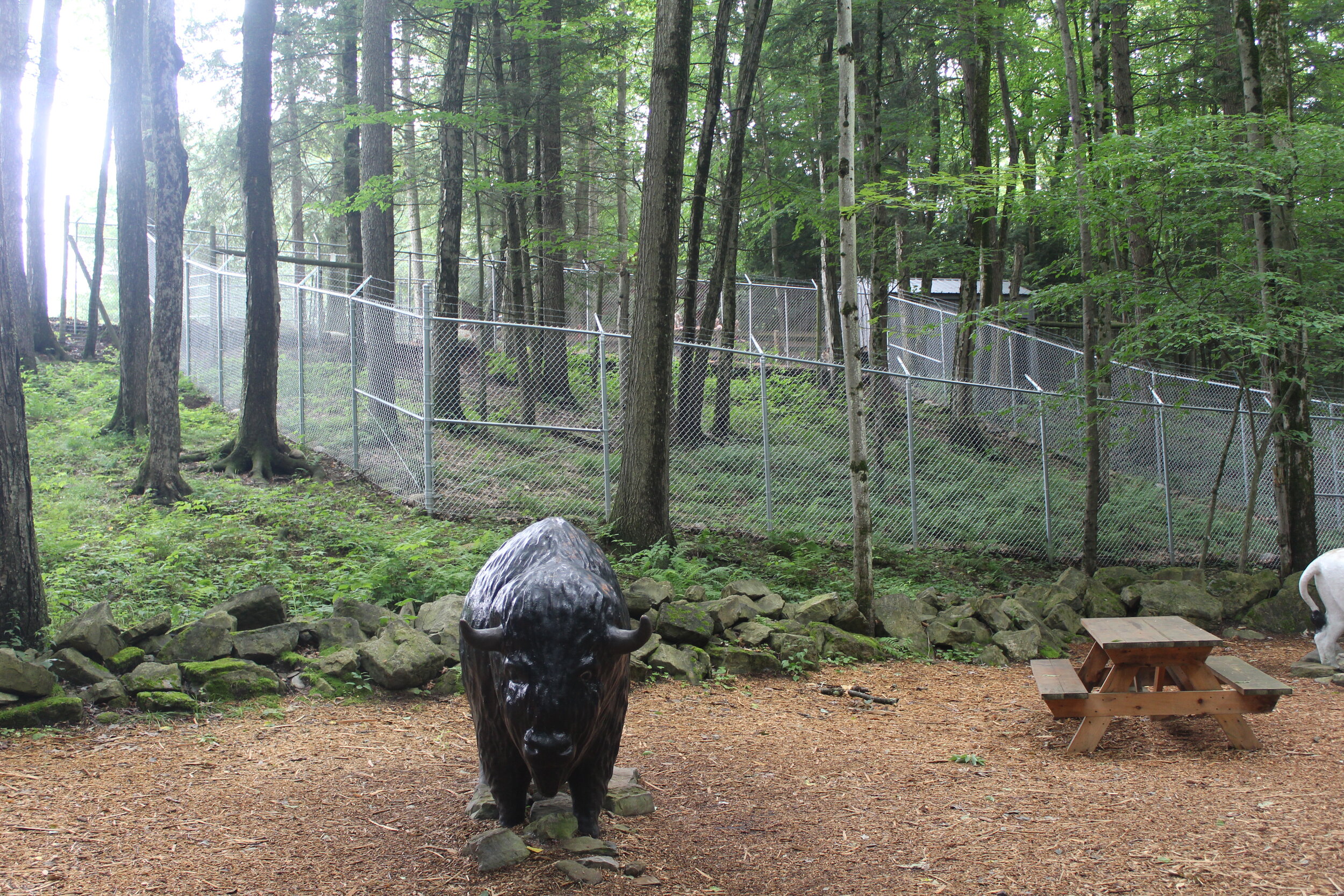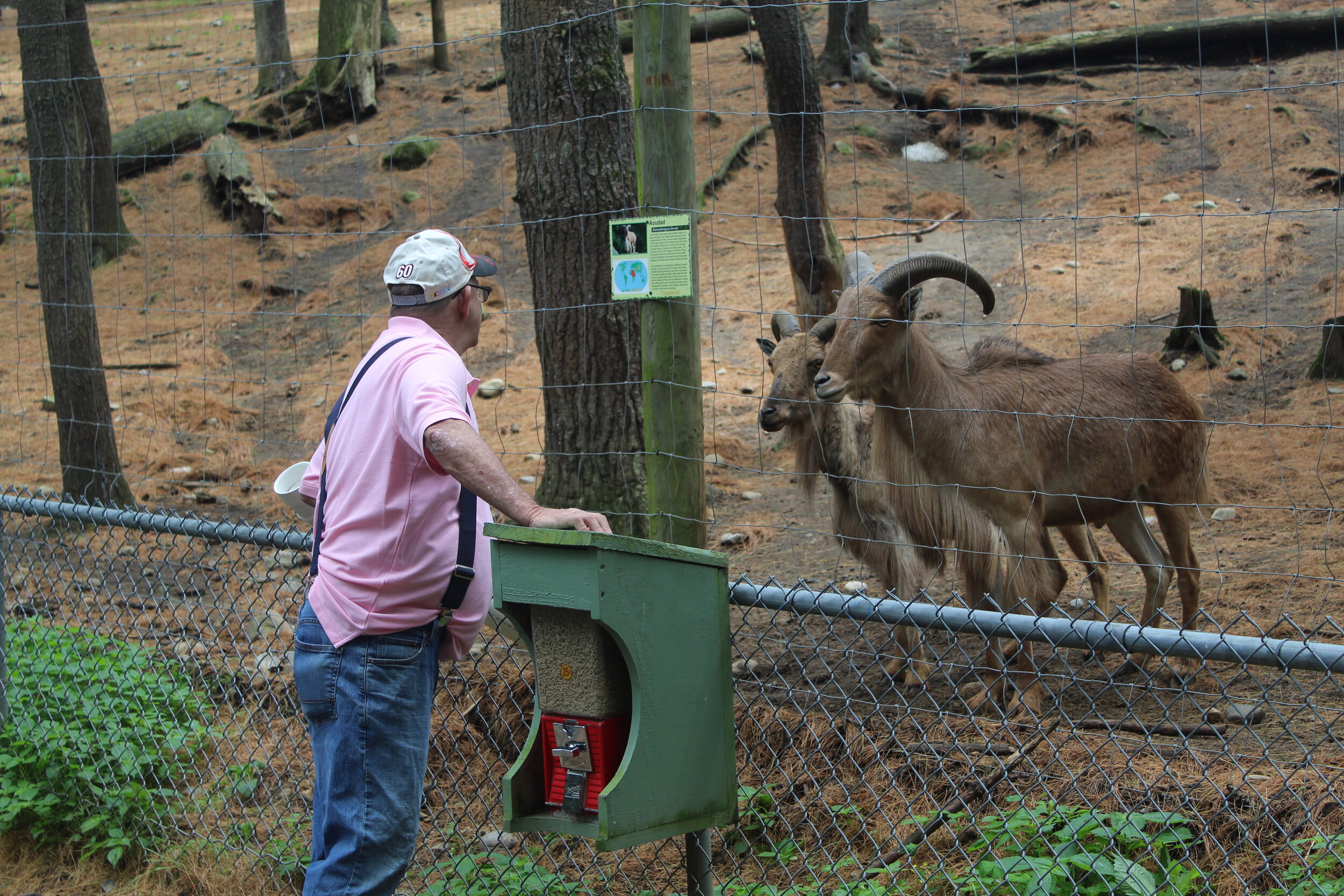CASE STUDY: Adirondack Animal Land
In the lake country of upstate New York, nestled among the Adirondack pines looming overhead like giant redwoods of the east, the quirky, non-accredited 90+ acre Adirondack Animal Land draws families looking to connect with animals. Pulling into the parking lot, demarcated with a vintage sign (that reminded me of motels situated around modest tourist attractions) and large paddocks traditionally holding horses, I’m reminded this is probably what many envision as the definition of a small American zoo.
The entry to the park, through a non-descript long metal building with a large lumberjack sculpture outside, made me seriously think twice about going in. But, as you know, every zoo has room for improvement, and some just need a little more guidance than others.
In this case, I discovered Adirondack Animal Land, unfortunately, falls into the latter.
At a price tag of $18 plus another $4 for a cup of carrots and a cup of generic feed pellets, I expected a bit less improvement needed. That’s not to say there aren’t positives about the zoo—there are! Let’s begin there, shall we?
The zoo is large and includes in the base ticket both a walking tour and a safari tour (a non-feeding experience in an open air seated trailer pulled by a tractor with a lively and engaging guide). The safari is the highlight of the experience. Although short, the tour takes guests through multiple paddocks that open into each other, and contain an appropriate number of animals including camels, zebras, ostriches, rheas, pot-belled pigs (a first for me on a safari!), eland, among others. Guests are advised to keep their hands to themselves as the animals are allowed to choose if they want to interact with the buggy, and interact they DO choose—especially the camels, who can be quite aggressive going after the feed container welded by the guide. But all in good fun. The guide narrates the scene with humor, but does also give interesting information about the species and about the individuals at the zoo including their history producing offspring. I was there during rhea and ostrich nesting season, with multiple rheas sitting on nests throughout the paddock.
The site of the zoo itself is incredibly beautiful. Its set alongside a stream (or river—it seemed more swollen than normal on my visit, but not having visited prior, I don’t know why I would think that…), the walking portion of the zoo a long linear swath on the bank. One side of the zoo takes advantage of the steep hillside opposite the stream, placing hoofstock (including llama, zebra, fallow deer, donkeys and others) amongst the tall trees with challenging terrain that made for truly lovely naturalistic, if not muddy, Adirondack habitats. When the sun peeked through the trees creating a dabbled pattern on the forest floor, it was easy to imagine getting lost in a magical forest.
But then you encounter the inscrutable Old West town complete with a skeleton guarding the graveyard, fiberglass or plastic sculptures of domestic animals in corrals (where real domestics very likely could live well), and an “Indian exhibit.” Or, the teeny town with off-brand sculptures of cartoon characters; or, the severely underpopulated garden gnome village (take the random ones from the aviary garden and put them back home?). Don’t get me wrong…I am ALL for whimsy and kitsch, but this whimsy and kitsch felt unintentional, old, and without any cheerful wit leaving only a borderline feeling of creepiness.
But the worst offenses were the ones that truly are offensive. Issues that really made me totter on the line of leaving without finishing the zoo—several times. As I noted, guests can purchase feed at the front door. I’m not opposed to feeding animals at zoos, when guests are educated on HOW to feed and WHO to feed, and when feeding is monitored. Most of the zoo was not monitored, and I was given zero direction on who I could feed or how to prevent my fingers from being snatched off by a hungry tortoise. Ultimately, guests could feed just about any animal they so chose. Most habitats included a handy feed chute to help guests avoid finger nibbles. However, as you can expect, without monitoring, many guests got ‘fed up’ with the chutes and just leaned over the barriers to feed animals from their hands. What’s more, the free-feeding has created a lot of begging animals. This brings to mind not very positive associations with dancing bears and red pandas in China—not an association any zoo wants. It did have the positive benefit of excellent photos of animals, but the trade-off is just not worthwhile. The zoo is home to two giraffes who are also free-fed by the public without monitoring. These guys along with a voracious camel are the recipients of carrots. I’m not a nutritionist, but I do know that carrots have quite a bit of sugar, and I wouldn’t think a daily diet full of carrots is the best for these animals. What’s worse, in the primate area, feed machines dispense sugar cereal to toss into the enclosures.
Other issues at the zoo relate to a distinct lack of species-appropriate habitats providing complexity, freedom to exhibit natural behaviors, and ability to choose environmental attributes. Prairie dogs were not provided with soil that was structural enough for them to tunnel. They didn’t even receive logs or places to hide. The exhibit was fully surrounded by guests, with no means for the critters to escape their eyes or their screams. Primate habitats feature concrete floors and limited climbing structures, and many didn’t have access to natural sunlight as an option—especially the ring-tailed lemurs. Throughout the zoo, speakers blared a country music station, not even allowing for auditory escape.
The zoo posted a sign that states the importance of zoos and that this zoo provides the best care possible to its animals. I want to believe the zoo’s heart is in the right place, but right now its not immediately apparent. If someone who doesn’t like zoos comes to this zoo, I’m afraid their perceptions will remain unchanged (or perhaps even worse, their convictions strengthened). However, there are some easy fixes here: get rid of the chintzy sculptures and artificial flowers throughout; stop blasting music everywhere; provide distinct instructions about feeding, and stop feeding sugar laden foods—better yet, only do feedings at set times throughout the day at set locations; get some natural substrates into those with plain concrete. Start there, then let’s talk about how to feature the beautiful pine forest as the star of the walking tour, building upon the magical deer park tucked all the way at the end of the current park. The story of this zoo is just the beginning, and tough love is sometimes hard to hear.


